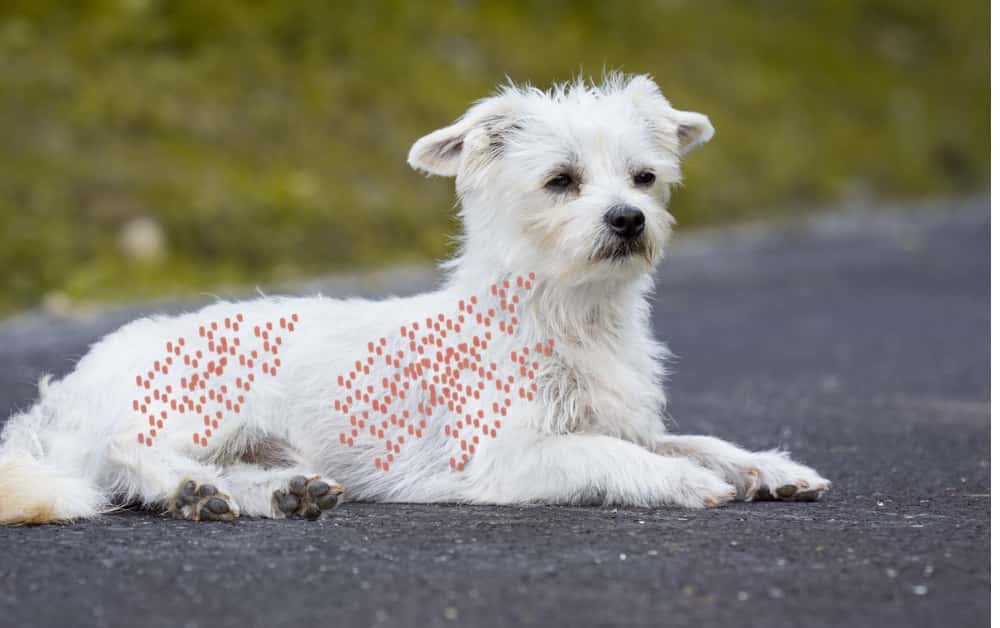Hibiscrub is a disinfectant used to clean and sanitize skin. Hibiscrub is effective against bacteria, viruses, and fungi, making it a good choice for disinfecting dog wounds. It is often used in hospitals and other medical settings, but can be used at home on dogs as well and how to use Hibiscrub for dogs?
In this blog post, we will discuss how to use hibiscrub (chlorhexidine) on dogs? What are the benefits, side effects and how to safely use it for your pet.
- How to use Hibiscrub for Dogs?
- What are the benefits of using Hibiscrub on dogs?
- What are the side effects of using Hibiscrub on dogs?
- How to safely use Hibiscrub on dogs?
- How do you dilute Hibiscrub for dogs?
- Can I use Hibiscrub on my dog’s ears?
- How often can I use Hibiscrub on my dog?
- Can you use Sudocrem on dogs?
- Conclusion:
How to use Hibiscrub for Dogs?
Hibiscrub or chlorhexidine gluconate can be purchased over the counter in most pharmacies. It is available as a liquid, cream, or gel. Before using hibiscrub, make sure to read the label and follow the directions carefully.

How to Use Hibiscrub on Dogs?
#1. Start by wetting your hands and forearms with warm water.
#2. Dilute the Hibiscrub with 1:20 (If your vet Advised)
#3. Apply a small amount of hibiscrub to your hands and rub them together.
#4. Gently massage the hibiscrub into your dog’s fur.
#5. Be sure to avoid getting any hibiscrub into your dog’s eyes, nose, or mouth.
#6. Rinse your dog off with warm water.
#7. Dry your dog off with a towel.
#8. Use an e-cone to protect your pet from ingesting the chlorhexidine from its coat.
What are the benefits of using Hibiscrub on dogs?
Hibiscrub can be used to clean and disinfect wounds. It is also effective against bacteria, viruses, and fungi. Hibiscrub is safe for use on puppies when used as directed.
What are the side effects of using Hibiscrub on dogs?
Side effects of hibiscrub are rare but may include skin irritation, redness, or itchiness. If you notice any of these side effects, stop using hibiscrub and contact your veterinarian.
How to safely use Hibiscrub on dogs?
To avoid any adverse side effects, it is important to use hibiscrub as directed. Do not get hibiscrub in your dog’s eyes, nose, or mouth.
If you accidentally get chlorhexidine in these areas, rinse it off immediately with water. If you have any questions about using hibiscrub on your dog, contact your veterinarian or let us know in the comment section.
How do you dilute Hibiscrub for dogs?
You can dilute the hibiscrub at 1:20 for your dog. Add one part hibiscrub to 20 parts of water. Dilution of Hibiscrub is essential for canines to avoid any toxic side effects.
However many veternarain suggestThere is no need to dilute Hibiscrub when using it on dogs. Make sure to confirm the use of chlorhexidine (Hibiscrub) on your canine with your vet advice only.
Also make sure to follow the directions on the label and apply a small amount of Hibiscrub to your hands before massaging it into your dog’s fur.
Be sure to avoid getting any Hibiscrub into your dog’s eyes, nose, or mouth. Rinse your dog off with warm water after application and dry them off with a towel.
You May Also Like To Read:
- 7 Reasons Why Do White Dogs Turn Red? [Prevention]
- Can Dogs Eat Blood? 7 Side Effects [Expert Opinion]
Can I use Hibiscrub on my dog’s ears?
No, you should not use Hibiscrub on your dog’s ears. The ear canal is a sensitive area and using Hibiscrub in the ear can cause irritation. If you need to clean your dog’s ears, ask your veterinarian for advice on safe and effective ear cleaners.
How often can I use Hibiscrub on my dog?
There is no need to use Hibiscrub more than once a day unless directed by your veterinarian. If you are using chlorhexidine to clean a wound, follow your veterinarian’s instructions on how often to apply it.
Can you use Sudocrem on dogs?
No, Sudocrem is not safe for use on dogs. Sudocrem is a barrier cream that is designed for use on human skin. It contains zinc oxide which can be toxic to dogs if ingested. If you need a barrier cream for your dog, ask your veterinarian for advice on safe and effective products.
Conclusion:
How to use Hibiscrub for dogs? Hibiscrub is a safe and effective way to clean and disinfect wounds on dogs. It is also effective against bacteria, viruses, and fungi. When used as directed, hibiscrub is safe for use on dogs. If you have any questions about using hibiscrub on your dog, contact your veterinarian.




![Can Dogs Eat Blood? 7 Side Effects [Expert Opinion]](https://petskor.com/wp-content/uploads/2022/04/Webp.net-resizeimage-12.jpg)
